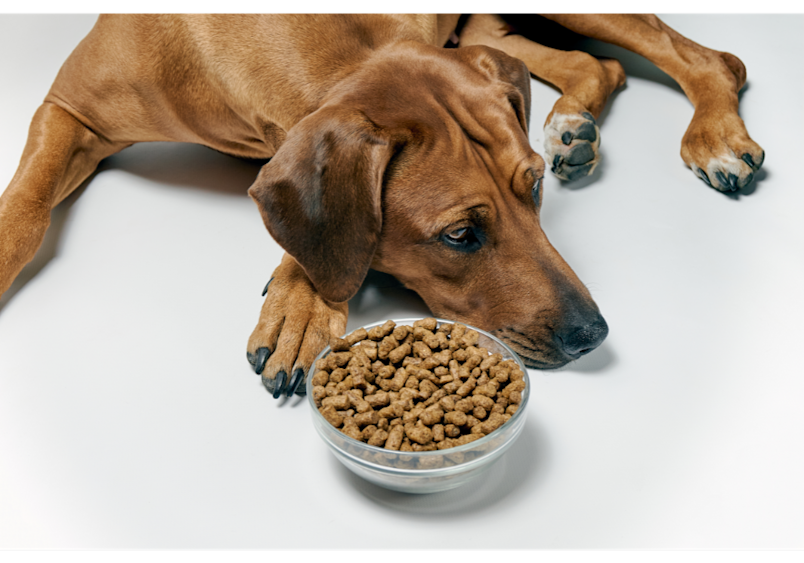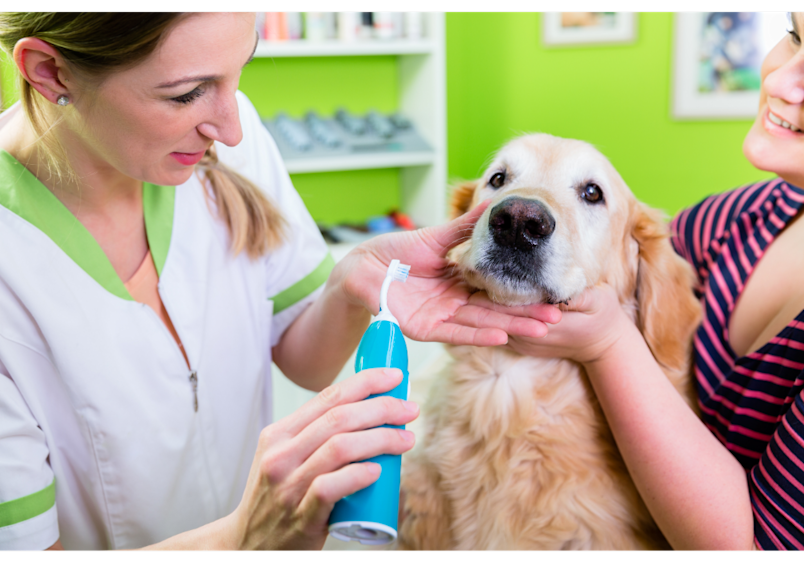
I’ll bet you don’t put a lot of thought into your dog’s dental health—at least, not until they try to lick your face and you’re met with a wall of foul breath that seems to taint the air for days. Bad breath is only one sign of dental disease in dogs, a common issue that affects over 80% of dogs over three years of age. Dental disease has many repercussions, besides just bad breath. It can progressively lead to tooth decay and even infections elsewhere in the body.
We’re here to help you get control of your dog’s health by providing some insight into the stages of dog tooth decay, what you may notice, and what you can do about it.
The Stages of Dog Tooth Decay
Dental disease isn’t a one and done issue, if untreated it progresses from bad to ugly, and the stage of tooth decay will determine the best course of treatment.
Gingivitis
A dog’s oral environment is similar to ours, barring a few substitutions in the types of normal bacteria that live there and of course what they eat. Like their gut microbiome, bacteria in the mouth consist of a delicate balance of good versus bad. Good bacteria can aid in digestion and even oral health, while bad bacteria, if allowed, can cause an accumulation of sticky brown stuff called tartar on a dog’s teeth. Tartar can cause irritation to the gums and surrounding tissues causing gingivitis. You may notice bad breath and swollen and red gums with this first stage of tooth decay in dogs.
This is the best time to intervene, but if you don’t get your dog on a regular tooth cleaning schedule in this first stage, it can progress to early periodontitis.
Early Periodontitis
As gingivitis moves to early periodontitis, there will be an extension of inflammation deeper into the gums. It will even start to affect the connective tissues that hold the teeth in place and can start to cause some bone loss. As inflammation moves deeper, it creates more pockets for bacteria to flourish, further increasing the severity.
You’ll continue to notice redness and swelling of the gums, along with bad breath, but also your dog may start to get uncomfortable chewing especially on dry kibble or other firm objects.
Moderate Periodontitis
If nothing is done, periodontitis will continue to march toward the tooth roots, bringing inflammation and damage with it. Dogs with moderate periodontitis will start to see damage to the connective tissue that may be severe enough to cause loose teeth. They will also have bad breath, difficulty eating, and be less prone to chewing on toys as loose teeth can be very painful.
Advanced Periodontitis
If things were bad in the first three stages, then advanced periodontitis is where they get really, really bad. The damage to the gums and periodontal tissues can cause a lot of tooth loss, abscess formations, and pain. Dogs may be reluctant to eat and may lose weight as a result. You may see blood in their food and water bowls or on the toys that they touch.
The overload of bacteria that your dog’s mouth is experiencing with advanced periodontitis doesn’t always stay in the mouth. It can jump ship and move to other areas of the body, mainly the heart valves, where it can cause some serious and irreversible issues
Recognizing Signs of Tooth Decay in Dogs
Most dog parents will first notice their dog’s breath when it comes to recognizing dental disease, no matter what the stage. While we wouldn’t describe any dog’s breath as minty fresh, dental disease and tooth decay definitely packs a foul-smelling punch. Along with bad breath you may also see:
Red, swollen gums
Blood in food and water bowls or on toys
Reluctance or difficulty eating
Brown buildup on teeth
Weight loss
In the early stages, you may rely on your vet to pick up on any subtle changes. As the disease progresses, the signs will be more obvious at home.

Dog Teeth Tartar Stages and Their Impact
Dental disease and dog tooth decay all start with plaque and tartar buildup. It’s these deposits that allow the overgrowth of bacteria and inflammation to work their way in. To begin with, dogs will develop plaque, which is a soft film of bacteria and food debris that sticks to the teeth. It’s easily removed with brushing, but if left in place can mineralize into the harder to remove form of tartar. You’ll recognize it as brownish chunks that can build up on your dog’s teeth and that takes a professional cleaning to thoroughly remove.
Tartar can be mild, moderate or severe depending on the amount that’s stuck to a dog’s teeth. The more tartar there is, the more inflammation there is, and the more advanced the dental disease is. If left alone, tartar buildup can quickly lead to tooth decay.
Caring for a Dog with Bad Teeth
Dental disease can easily progress to the point your dog is losing teeth, or worse, getting infections elsewhere in the body. So, you’ll want to see your vet as soon as possible to get their mouth healthy.
Most dental treatment starts with a good professional cleaning. Your dog will be anesthetized so that your vet can get the best access possible. They will remove tartar buildup, polish the teeth, and extract any teeth that need it. Antibiotics and other medications may be needed to get infections and inflammation under control.
From there, it’s up to you to keep the issues from coming back. Your vet will outline an at-home plan that may include special dental products, treats, chews, or toys along with regular tooth brushing.
Preventing and Managing Dog Tooth Decay
When I bring up brushing their dog’s teeth, most pet parents give me a look of alarm and even confusion. It can be a little intimidating at first to attempt sticking a toothbrush in your pup’s mouth, but it can, and should, be done! How often should you brush your dog’s teeth? The best answer is as often as you can. The more you brush; the more plaque is removed before it gets a chance to turn into the problematic tartar.
Brushing your dog’s teeth to prevent tooth decay requires some special products, so before you go to spreading a healthy amount of Crest on a toothbrush and getting to work, speak to your veterinarian. Human dental health products aren’t safe for our pups since it’s more difficult to teach them to spit, so rely on Veterinary Oral Health Council approved products.
Some dogs take to tooth brushing, and some don’t. For those tight-lipped pups, look to specialized dental treats and toys that can mechanically scrape teeth to remove plaque or water additives, dental gels, or wipes that can help remove plaque without the use of a brush.
Even the best at-home dental care still requires regular veterinary visits to ensure that your due diligence is doing enough to keep your dog’s teeth clean and free from tooth decay. Annual or biannual cleanings may still be needed for some dogs, and it’s always good to let your vet have a regular look at your dog’s teeth anyway.

Importance of Pet Insurance for Dental Health
I realize that I mentioned professional veterinary care an awful lot in the last few sections and probably had most of you seeing dollar signs. Yes, dental care for your dog can get expensive, but you’re not just blowing in the foul-smelling wind here. dog insurance can help you out.
Does pet insurance cover teeth cleaning? Yes and no. Regular pet insurance policies won’t cover regular cleanings. Instead, pet dental insurance will often cover dental issues such as fractured teeth or dental disease, meaning that if your dog experiences any stage of the tooth decay process, you may be able to get reimbursed for a portion of the treatment costs.
We don’t want you to wait until your dog’s teeth get to the point that they need treatment, so Embrace has created a Wellness Rewards program that may help with the preventative cleanings that your vet so desperately wants your dog to have.
Avoid All the Stages of Dog Tooth Decay!
Dental disease and tooth decay are major problems for our canine companions, and they often go unnoticed until they’re well advanced. Recognizing the stages of tooth decay can really help you stay on top of your dog’s oral health so that you can seek veterinary care before things go too far. Routine at-home care and regular veterinary cleanings are your dog’s best bets for a healthy, disease-free mouth.